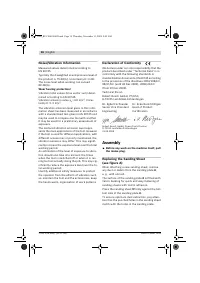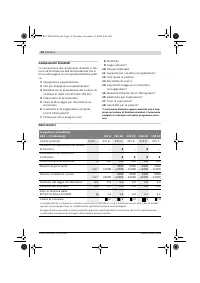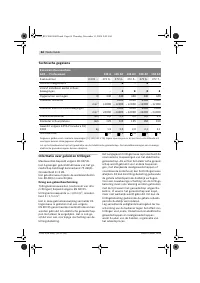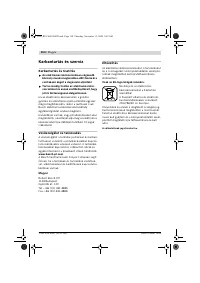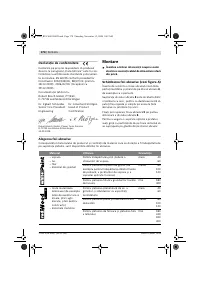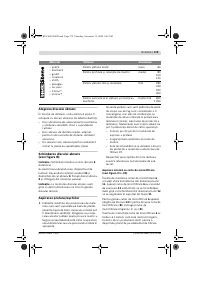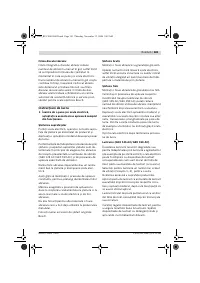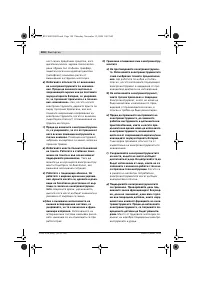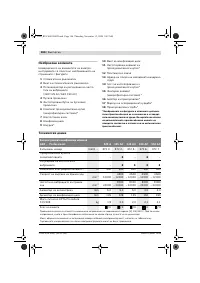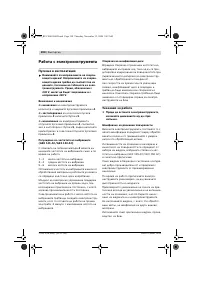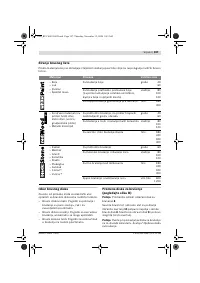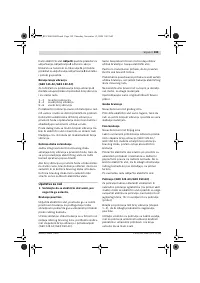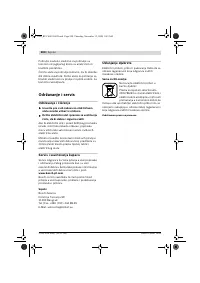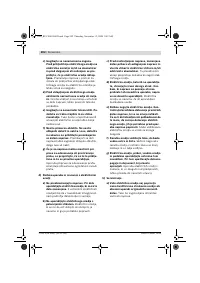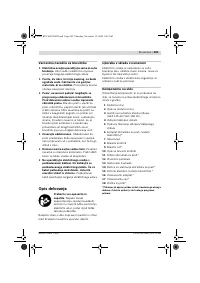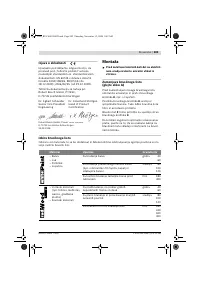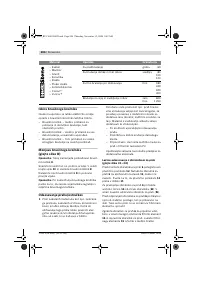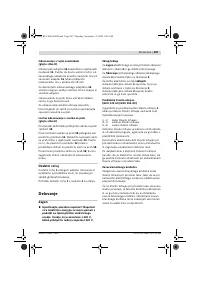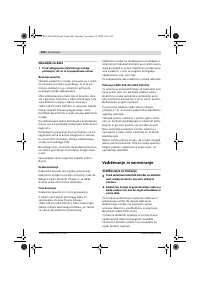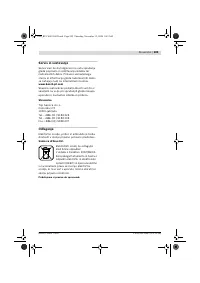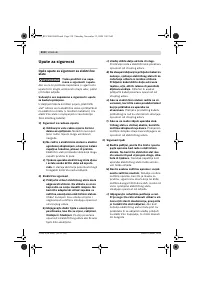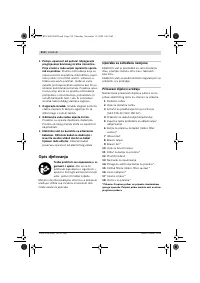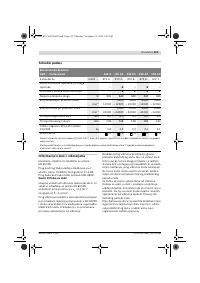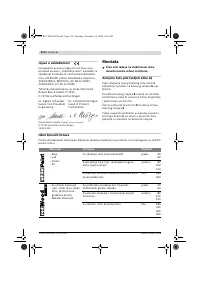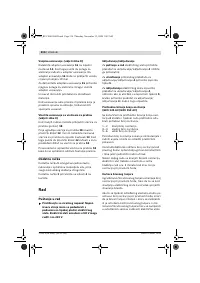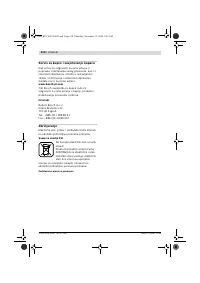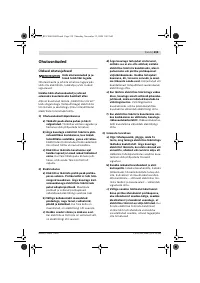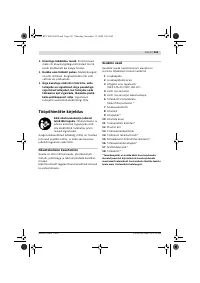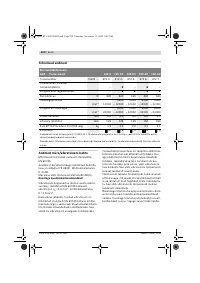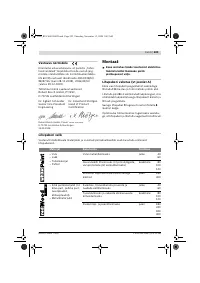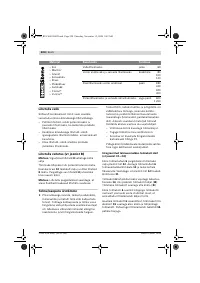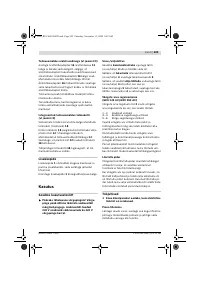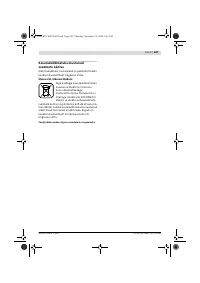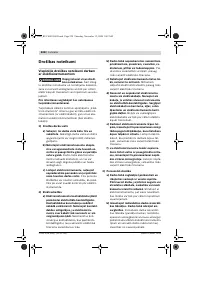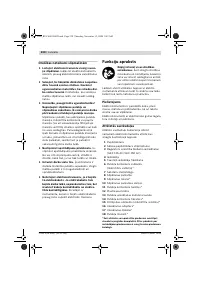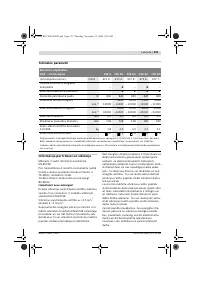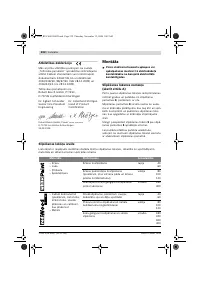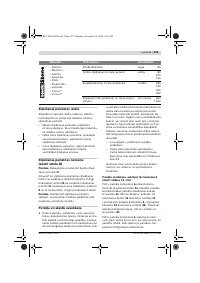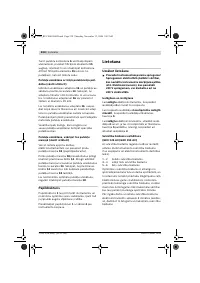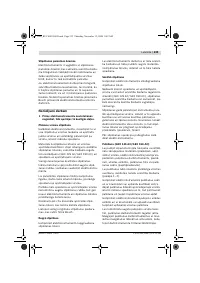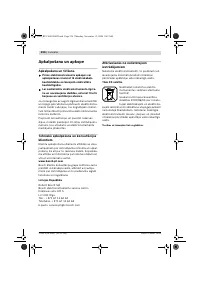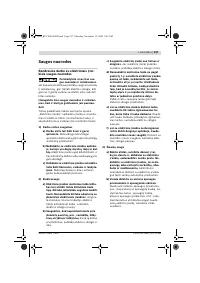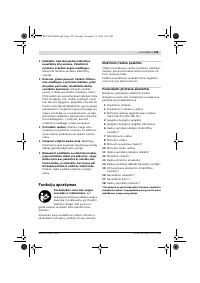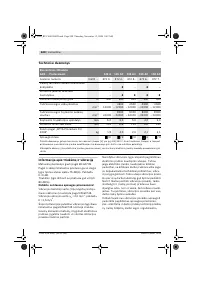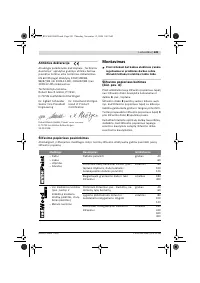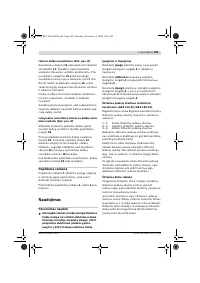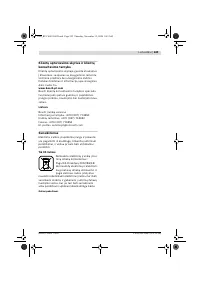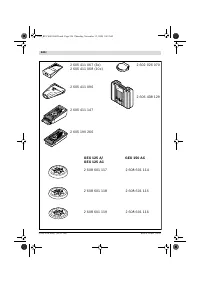Sanding Plate Brake; Working Advice; Sanding Surfaces - Bosch GEX 125 AC - Manuel d'utilisation - Page 9

Table des matières:
- Page 6 – Noise/Vibration Information; Wear hearing protection!; Declaration of Conformity; Assembly; Replacing the Sanding Sheet
- Page 7 – Selecting the Sanding Sheet
- Page 8 – Auxiliary Handle; Operation; Starting Operation; Switching On and Off
- Page 9 – Sanding Plate Brake; Working Advice; Sanding Surfaces
- Page 10 – Maintenance and Service; Maintenance and Cleaning; not; After-sales Service and Customer; Great Britain
- Page 11 – Disposal; Only for EC countries:
English |
21
Bosch Power Tools
1 609 929 N98 | (13.11.08)
Preselecting the Orbital Stroke Rate
(GEX 125 AC / GEX 150 AC)
With the thumbwheel for preselection of the or-
bital stroke rate
3
, you can preselect the re-
quired orbital stroke rate, even during opera-
tion.
The required stroke rate depends on the materi-
al and the working conditions and can be deter-
mined through practical testing.
The constant electronic control keeps the
stroke rate almost constant under no-load or
load conditions and ensures a uniform working
performance.
After longer periods of working at low stroke
rate, allow the machine to cool down by running
it for approx. 3 minutes at maximum stroke rate
with no load.
Sanding Plate Brake
An integrated sanding plate brake reduces the
stroke rate when running at no-load so that
scoring is prevented when placing the machine
onto the workpiece.
If the no-load stroke rate continuously increases
over the course of time, then the sanding plate
is damaged and must be replaced or the sanding
plate brake is worn. A worn sanding plate brake
must be replaced by an authorised after-sales
service agent for Bosch power tools.
Working Advice
f
Wait until the machine has come to a stand-
still before placing it down.
Sanding Surfaces
Switch the machine on, place it with the com-
plete sanding surface on the surface to be
worked and move the machine with moderate
pressure over the workpiece.
The removal capacity and the sanding pattern
are mainly determined by the selection of the
sanding sheet, the preselected orbital stroke
rate (GEX 125 AC / GEX 150 AC) and the applied
pressure.
Only flawless sanding sheets achieve good
sanding capacity and extend the service life of
the machine.
Pay attention to apply uniform sanding pres-
sure; this increases the working life of the sand-
ing sheets.
Intensifiying the sanding pressure does not lead
to an increase of the sanding capacity, but to in-
creased wear of the machine and the sanding
sheet.
A sanding sheet that has been used for metal
should not be used for other materials.
Use only original Bosch sanding accessories.
Rough Sanding
Attach a sanding sheet with coarse grain.
Apply only light pressure to the machine so that
it runs at a higher stroke rate and high material
removal is achieved.
Fine Sanding
Attach a sanding sheet with fine grain.
By lightly varying the application pressure or
changing the orbital stroke rate (GEX 125 AC /
GEX 150 AC), the sanding plate stroke rate can
be reduced whereby the orbital action is main-
tained.
With moderate pressure, move the machine in a
circular pattern or alternately in lengthwise and
crosswise directions over the workpiece. Do not
tilt the machine to avoid sanding through the
workpiece (e. g. when sanding veneer).
After finishing the working procedure, switch
the power tool off.
Polishing (GEX 125 AC / GEX 150 AC)
For the polishing of weathered paint or buffing
out scratches (e. g., acrylic glass), the machine
can be equipped with appropriate polishing ac-
cessories such as lamb’s wool bonnet, polishing
felt or sponge (accessories).
Select a low stroke rate (setting 1 – 2) for polish-
ing in order to avoid excessive heating of the
surface.
Apply polishing agent crosswise or in a circular
motion with a polishing sponge and moderate
pressure, and then allow it to dry lightly.
1 – 2
Low stroke rate
3 – 4
Medium stroke rate
5 – 6
High stroke rate
OBJ_BUCH-424-002.book Page 21 Thursday, November 13, 2008 9:49 AM
„Téléchargement du manuel“ signifie que vous devez attendre que le fichier soit complètement chargé avant de pouvoir le lire en ligne. Certains manuels sont très volumineux, et le temps de chargement dépend de la vitesse de votre connexion Internet.
Résumé
18 | English 1 609 929 N98 | (13.11.08) Bosch Power Tools Noise/Vibration Information Measured values determined according to EN 60745.Typically the A-weighted sound pressure level of the product is 75 dB(A). Uncertainty K = 3 dB.The noise level when working can exceed 80 dB(A). Wear hearing protect...
English | 19 Bosch Power Tools 1 609 929 N98 | (13.11.08) Selecting the Sanding Sheet Depending on the material to be worked and the required rate of material removal, different sanding sheets are available: Selection of the Sanding Plate Depending on the application, the machine can be equipped wit...
20 | English 1 609 929 N98 | (13.11.08) Bosch Power Tools Dust/Chip Extraction f Dusts from materials such as lead-containing coatings, some wood types, minerals and metal can be harmful to one’s health. Touch-ing or breathing-in the dusts can cause aller-gic reactions and/or lead to respiratory inf...




